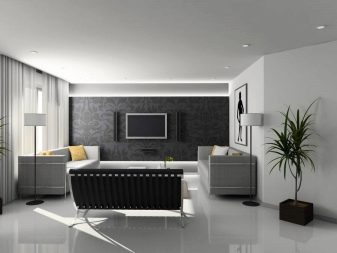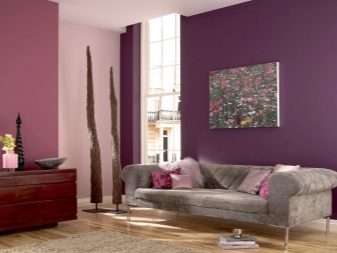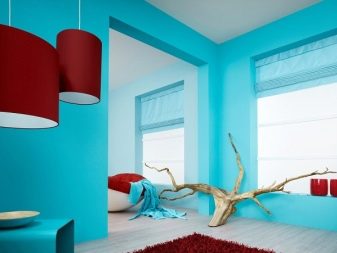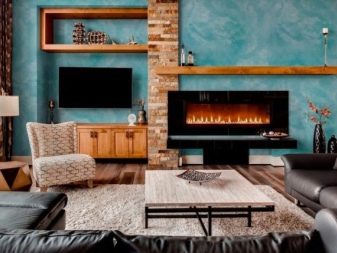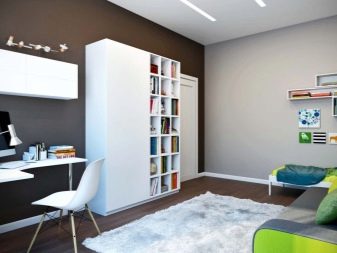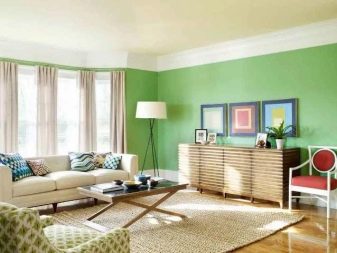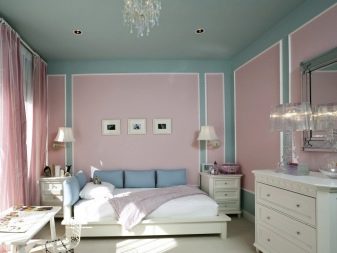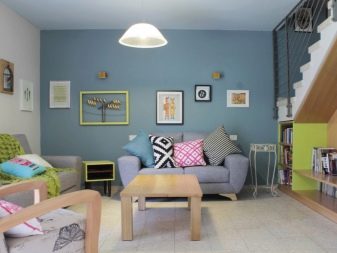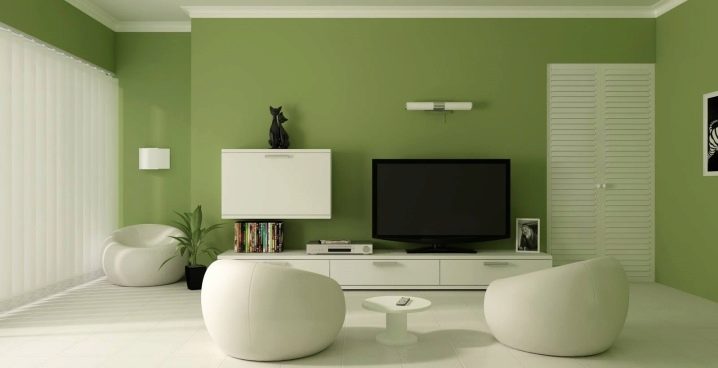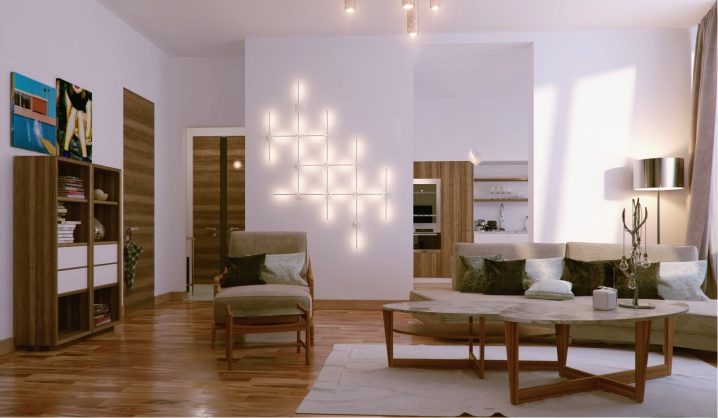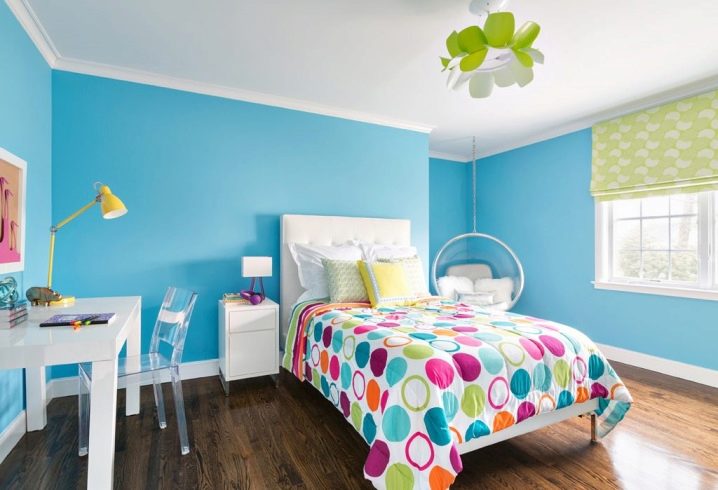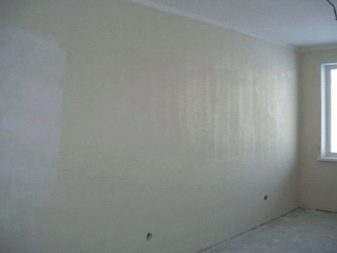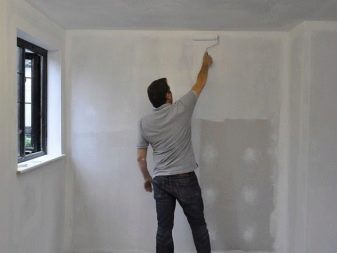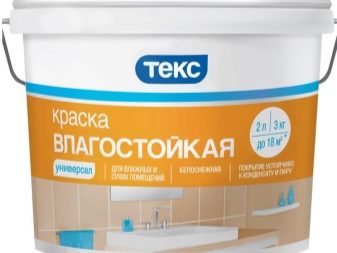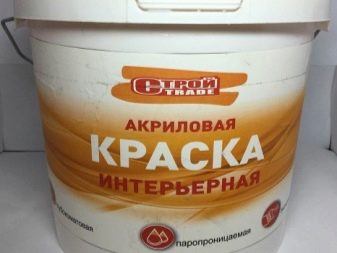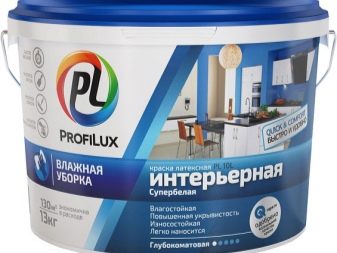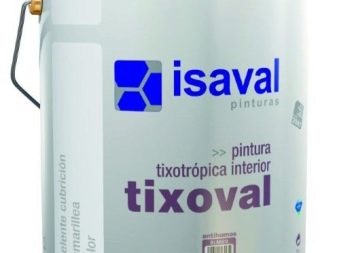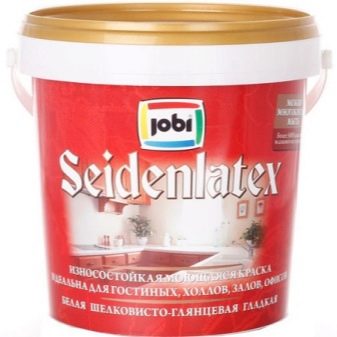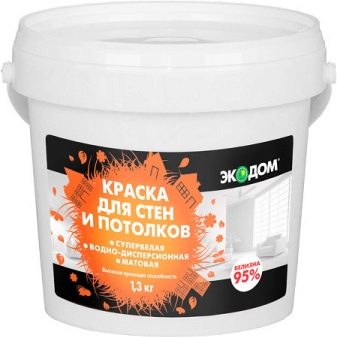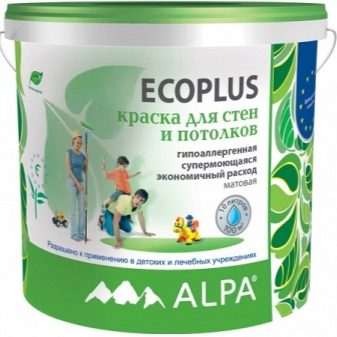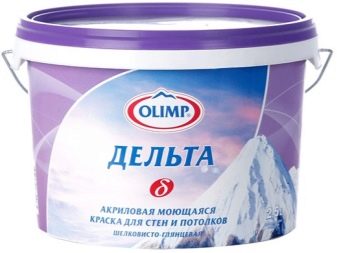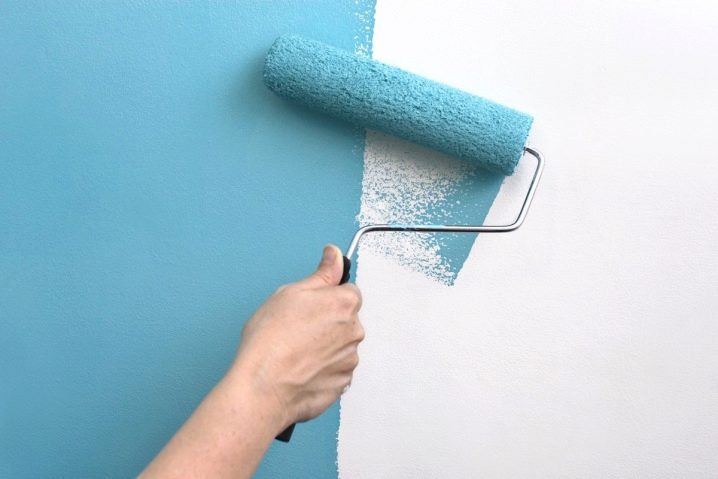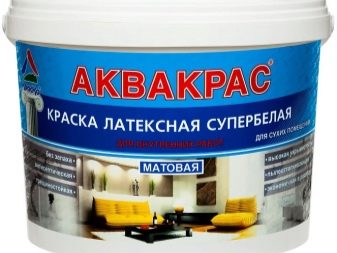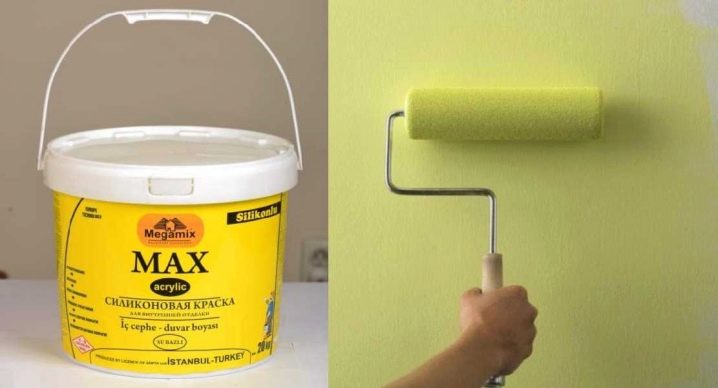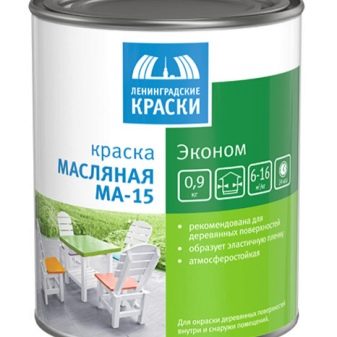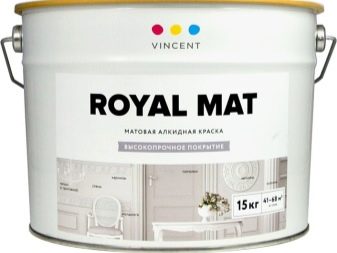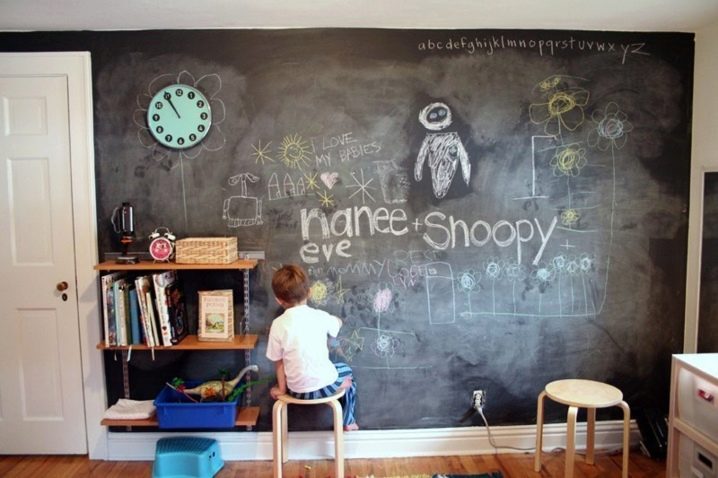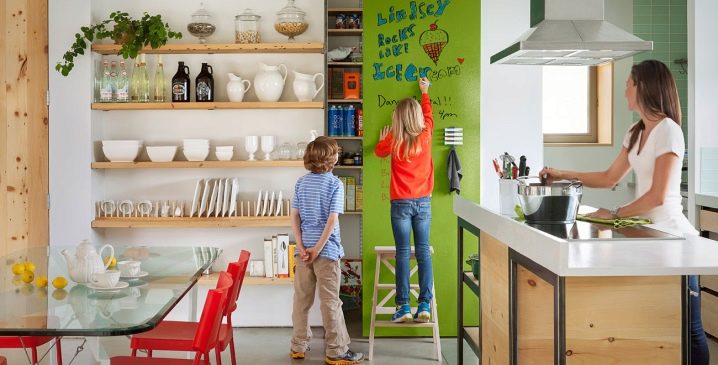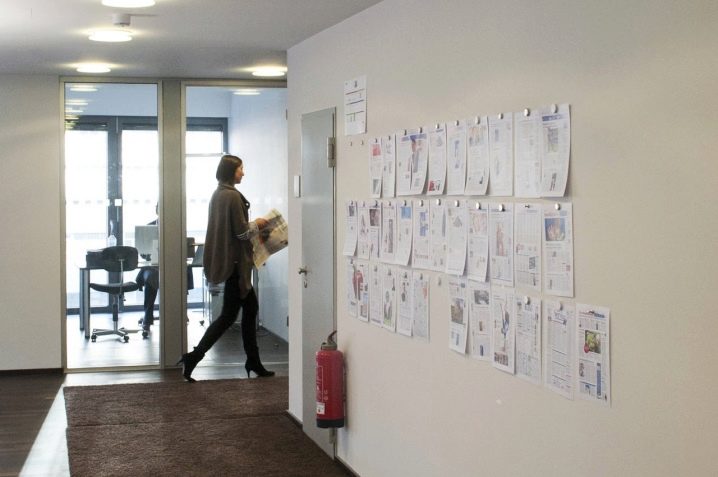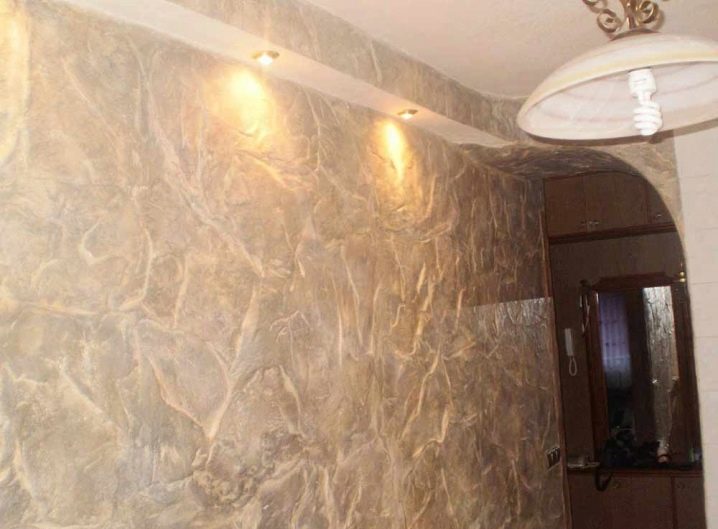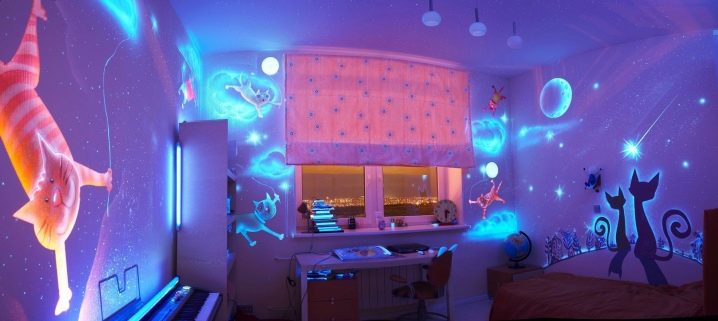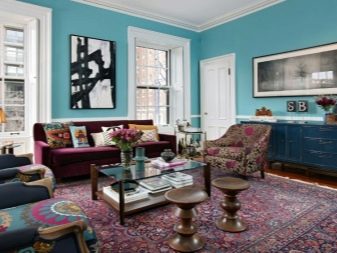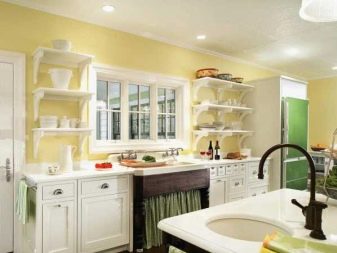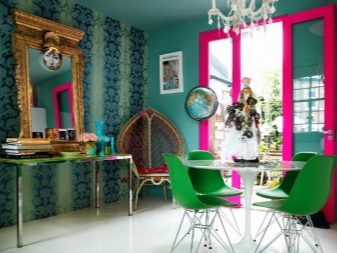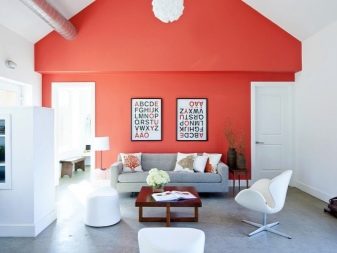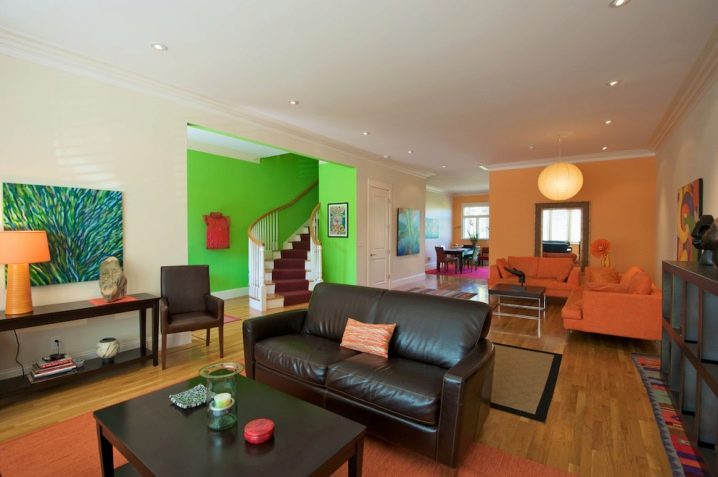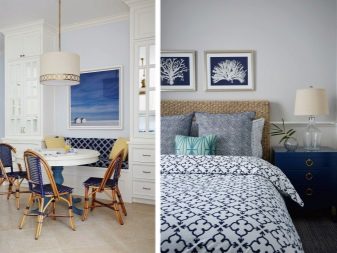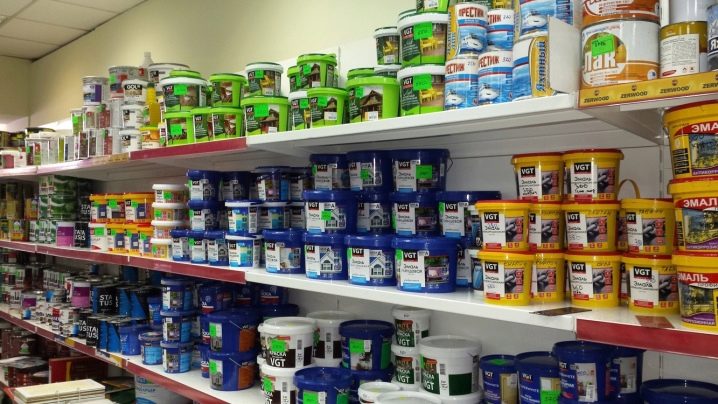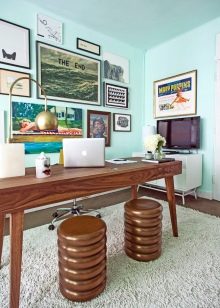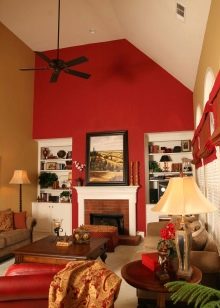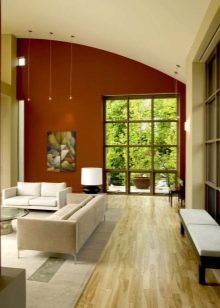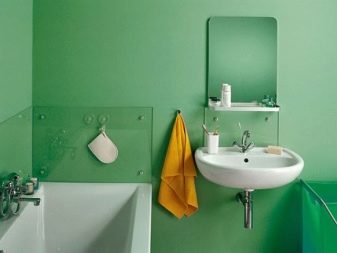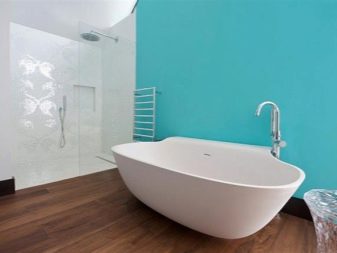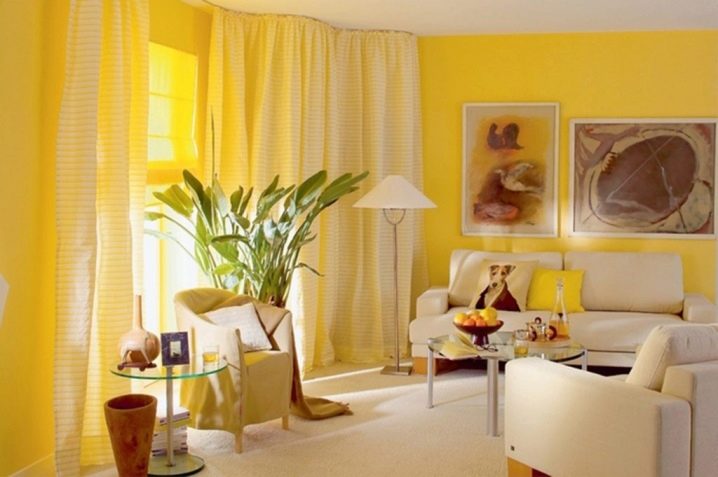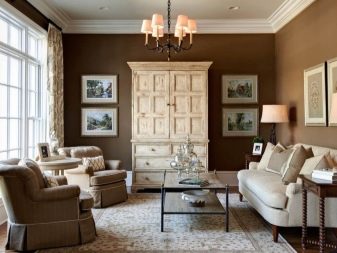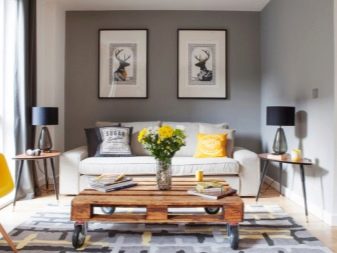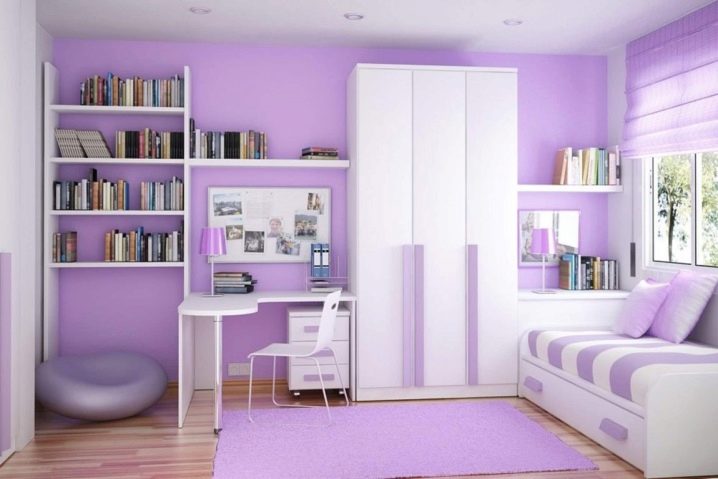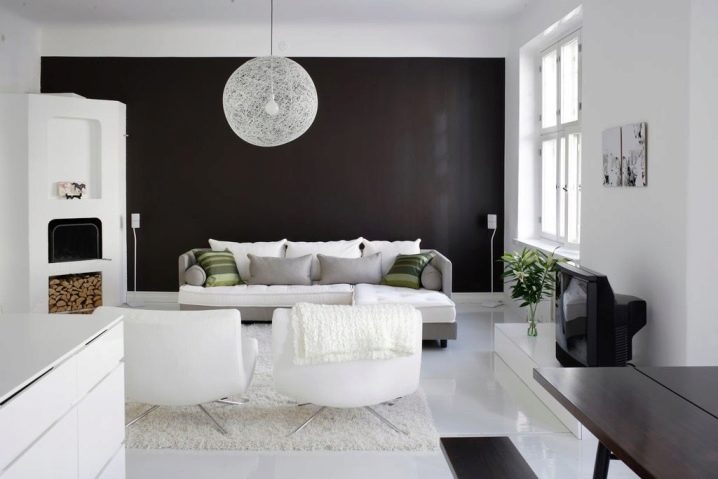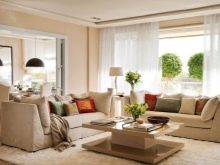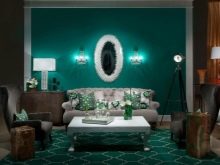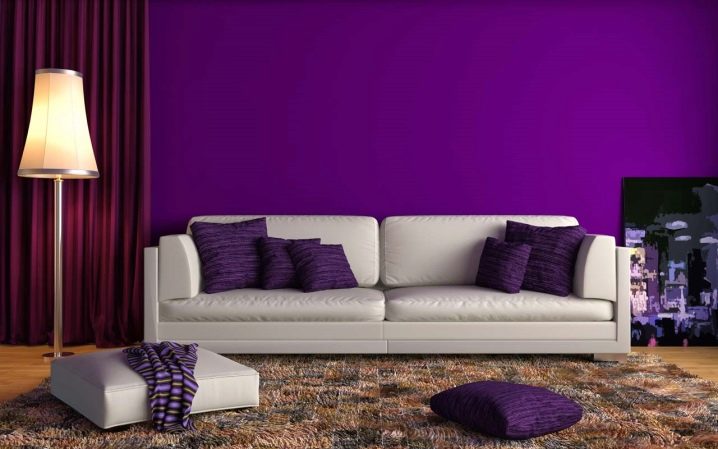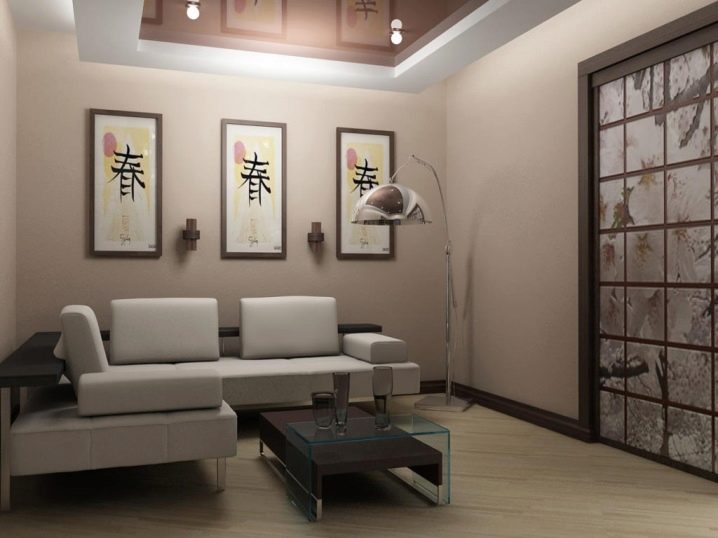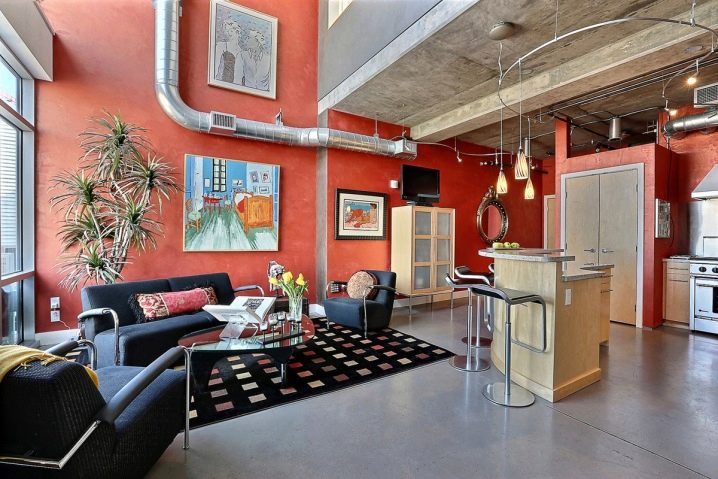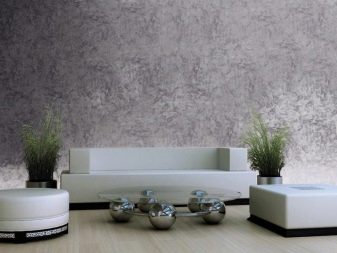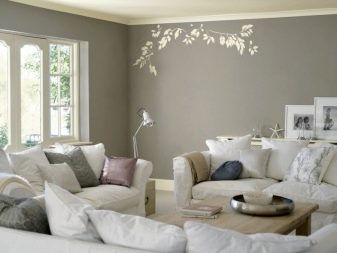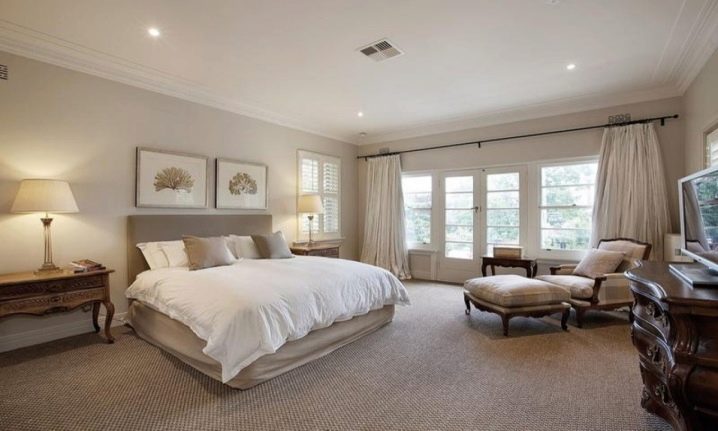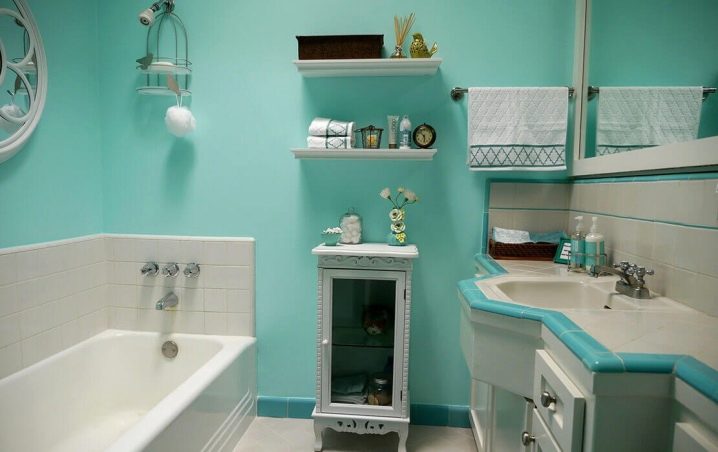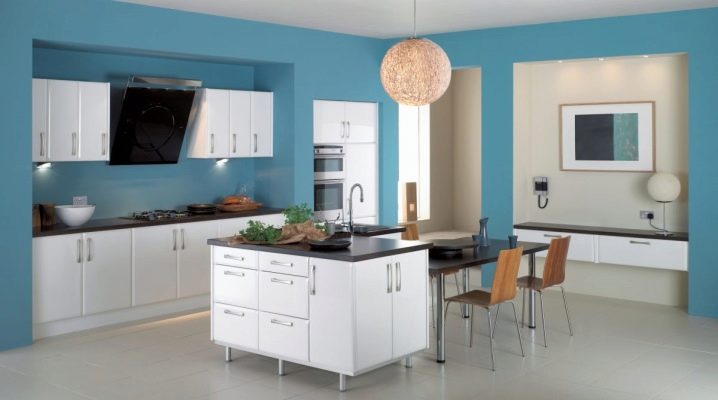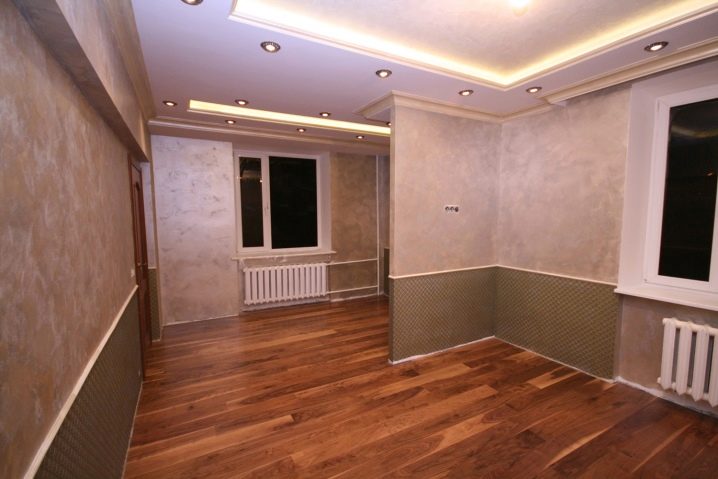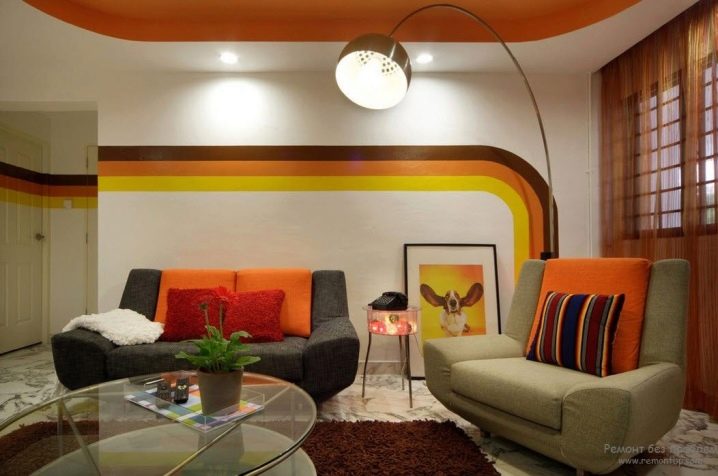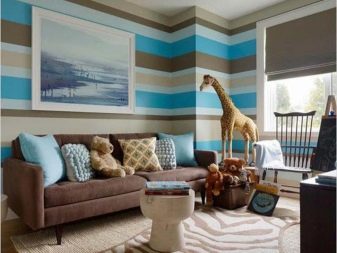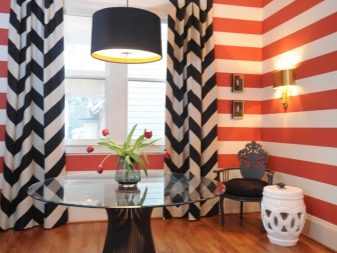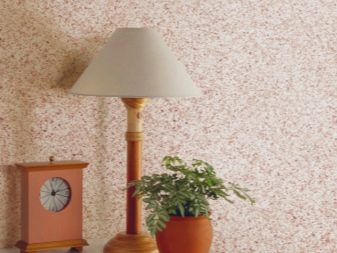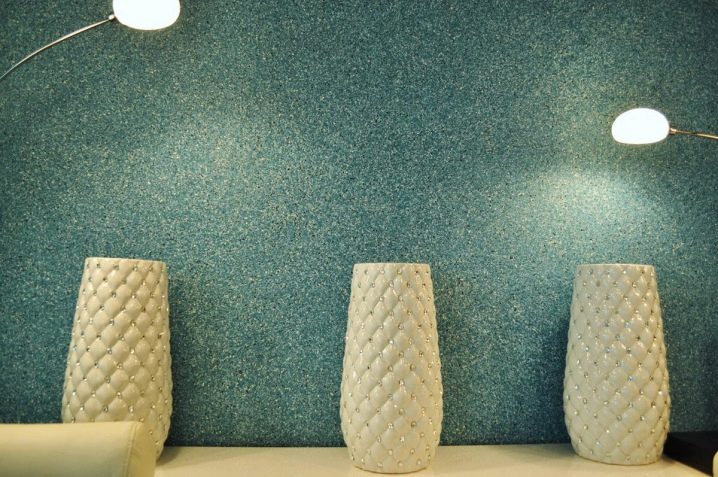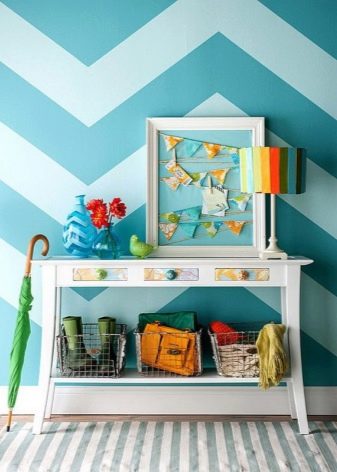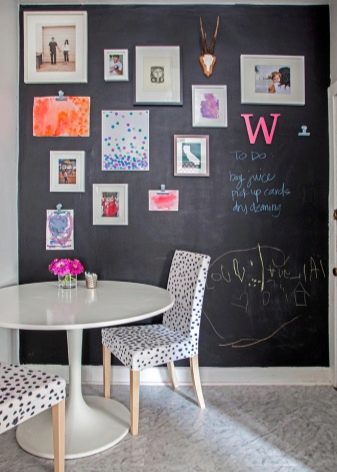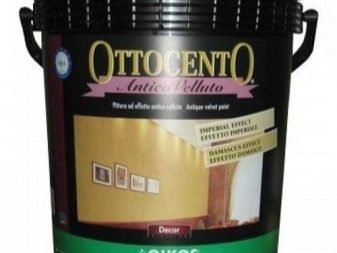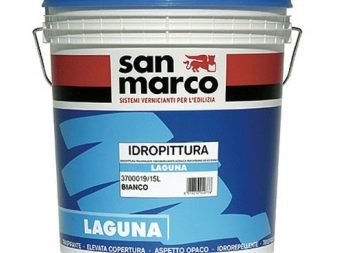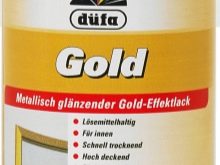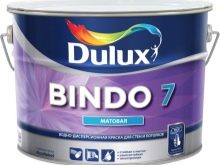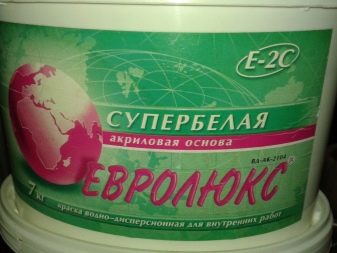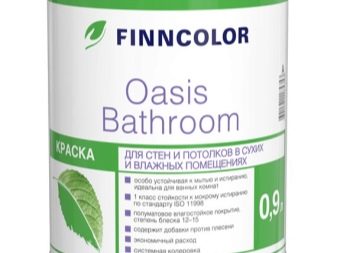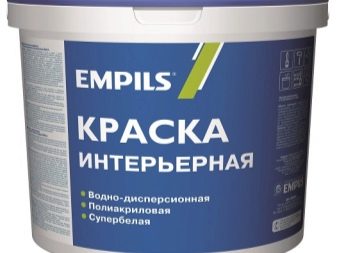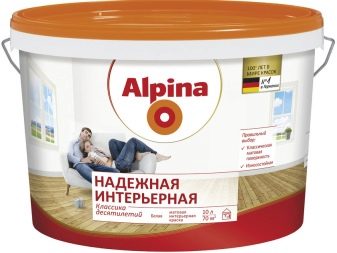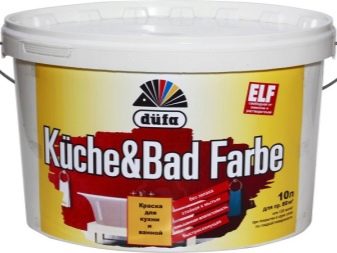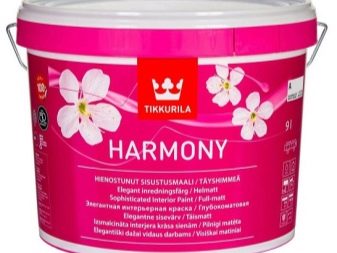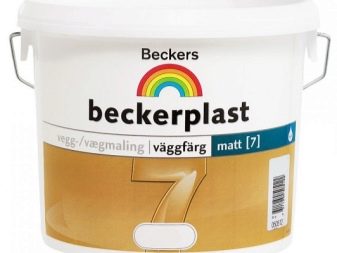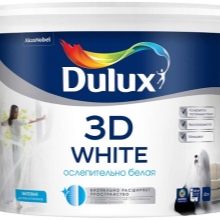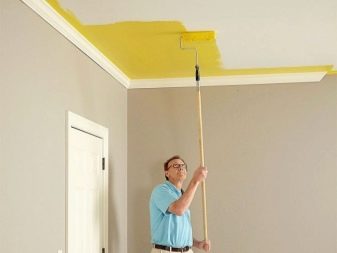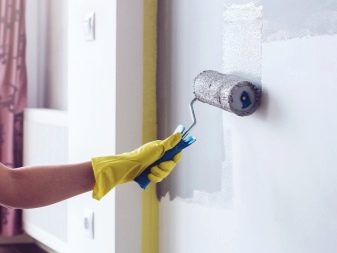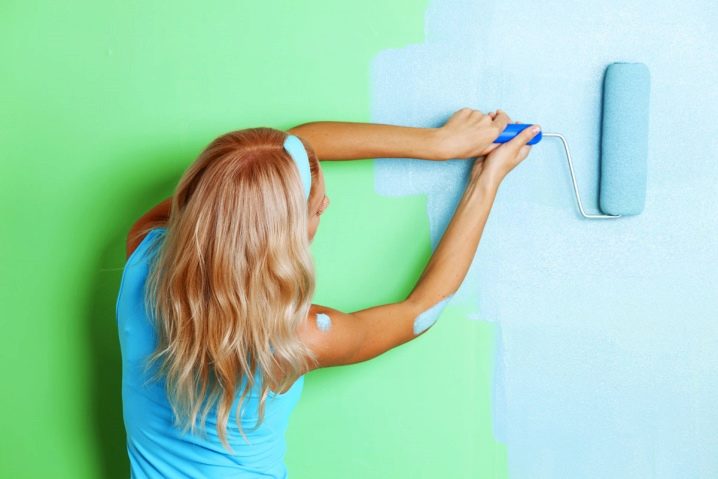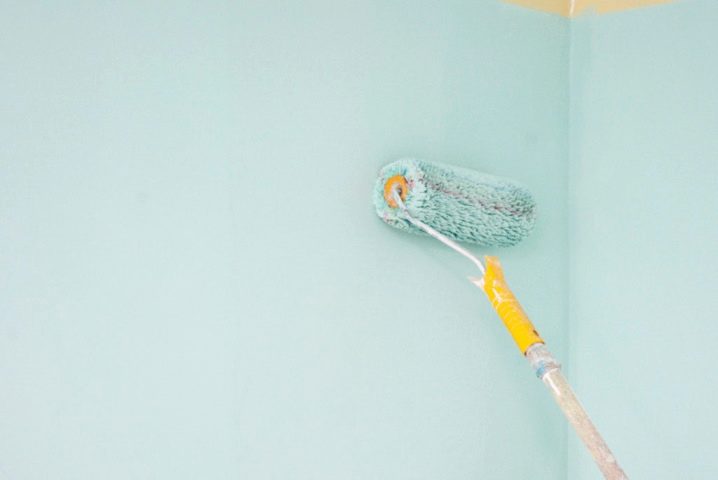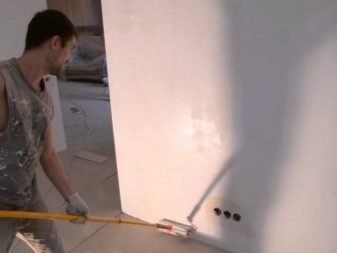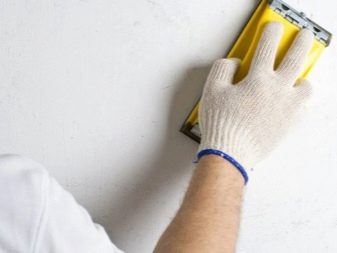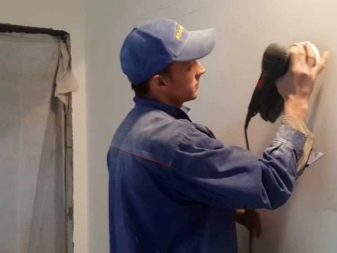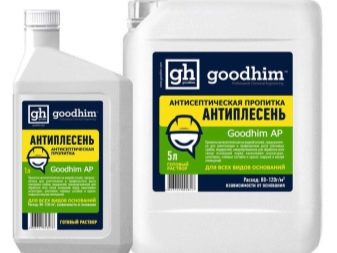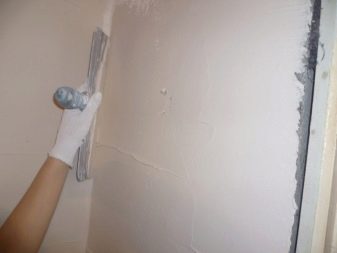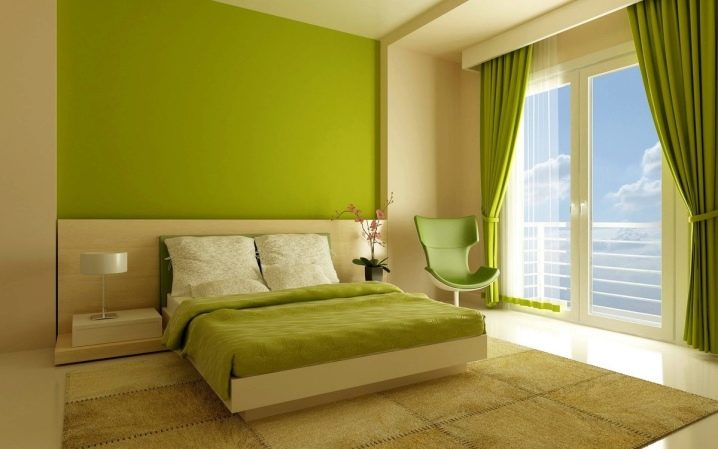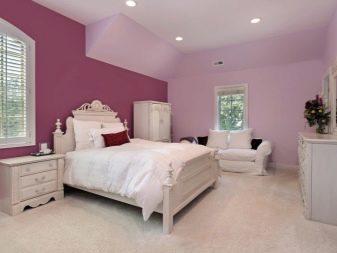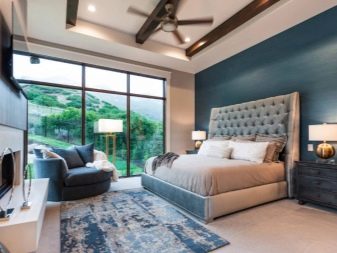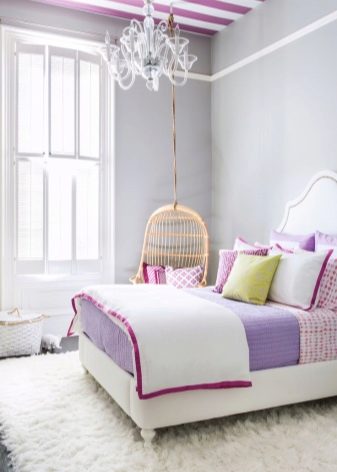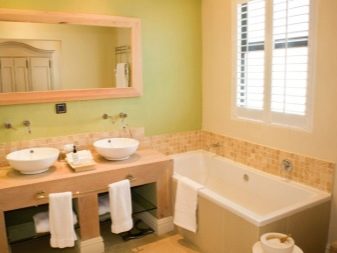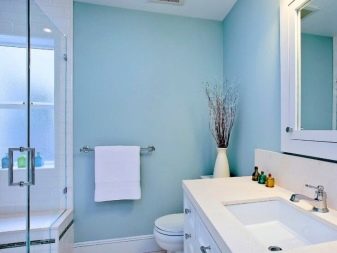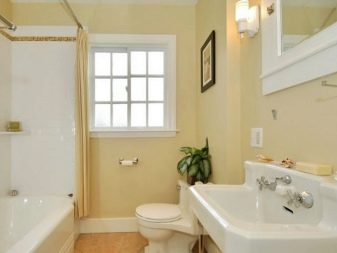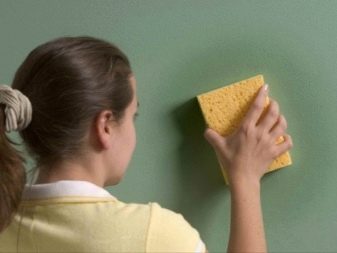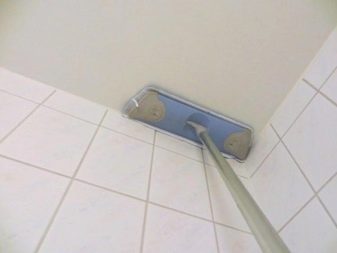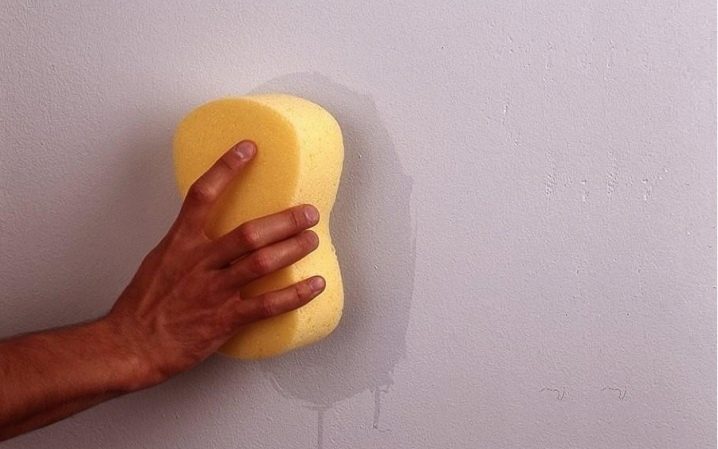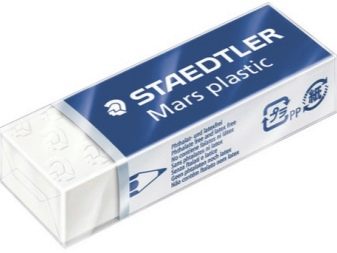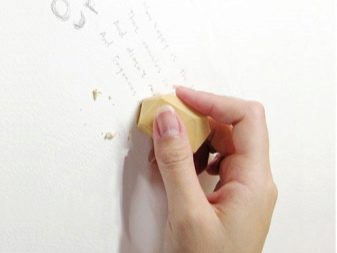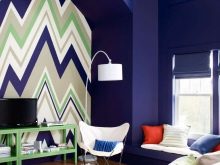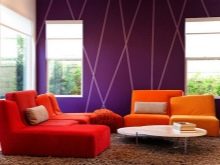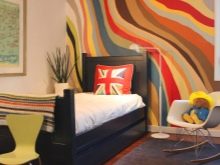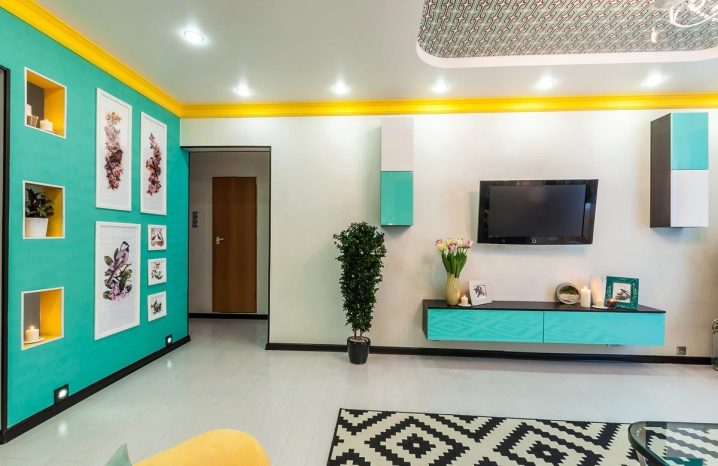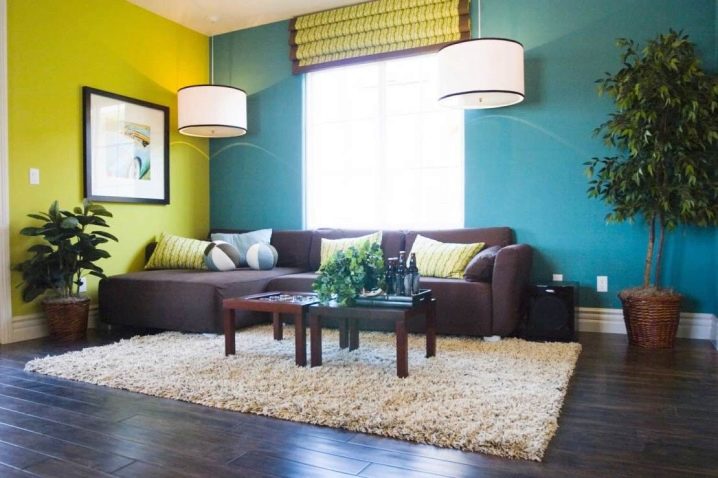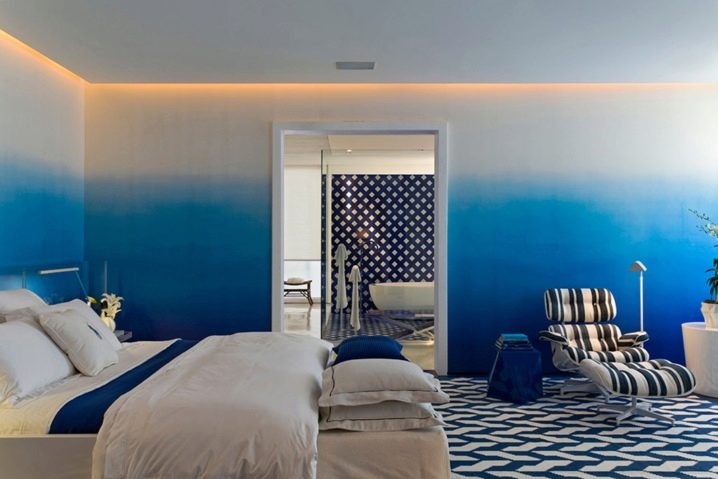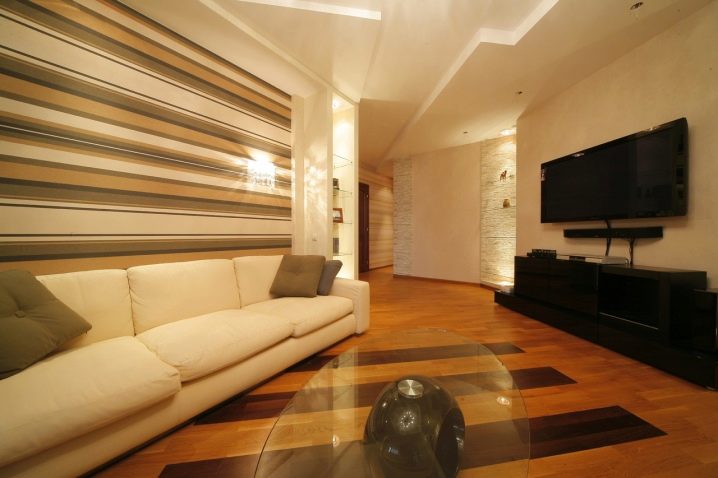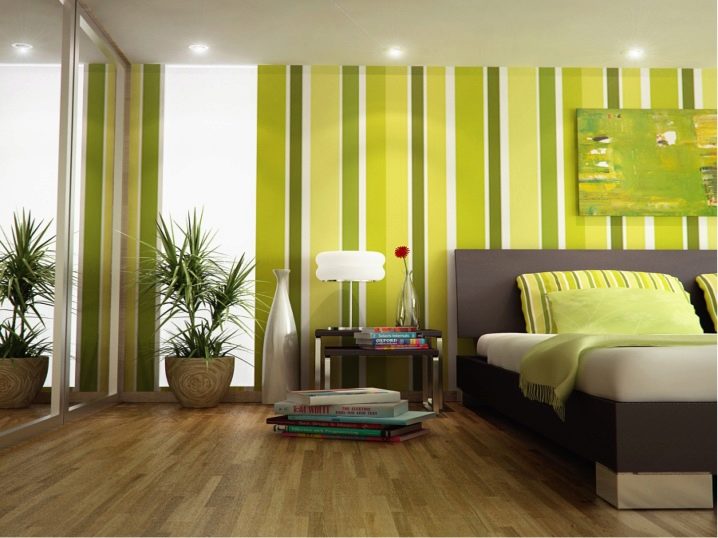How to choose the right paint for the walls?
Any modern repair involves the use of paintwork material. In some cases, with its help, most surfaces are finished: the floor, walls, and ceiling. In other cases - only some decorative elements.
The main thing is to choose the right paint so that the new repair will last as long as possible.
Special features
Paint can change any apartment beyond recognition. As a decorative coating for walls, it can be of various types in color, texture, degree of gloss. You can always choose a material that meets individual needs. In addition to its aesthetic properties, the paint can be used as a means to protect surfaces from certain environmental factors: moisture, sunlight, mold, fungus, wear, corrosion.
Paint - universal coating. It can be used to finish both the inside of the house and the outside. Any surface can be painted: wood, paper, metal, glass, concrete. When making a choice in favor of one or another product, one should carefully study the specific features of the use of a specific paint indicated on the package, the ability to paint various surfaces, and additional properties.
The pros and cons of coloring
Among the variety of options for finishing the room paint stands out for its positive sides. In her use say the following factors:
- Durability coverage. Compared with other types of finishing paint can remain on the walls unchanged for quite a long time - about 10 years.
- Resistant to wet cleaning, including the use of chemicals. However, special mention of this should be on the packaging.
- Cost Painting walls is cheaper than many other coatings.
- Variety of options. Paints are presented by a wide palette of various flowers. In addition, they can be mixed, combined in one room at once several types, select individual elements with contrasting colors.
- Easy to apply. It is not necessary to invite a specialist for coloring. In this process there is nothing difficult, you can repair the room on your own.
- Easy to upgrade room. If painted walls or its elements are soon bored, they can be easily repainted into other colors without resorting to global changes.
- Easy to care. Almost all paints withstand wet cleaning.
In addition, if a chip or crack forms on the wall, it is easy to disguise it, unlike, for example, wallpaper or tile.
The following points can be mentioned as minuses of the painted surface:
- A perfectly flat surface is required. Any irregularities will be visible through the layer of paint. The exception is the relief decoration of the walls.
- Processing walls takes much more time than, for example, wallpapering. The surface should be perfectly flat, without cracks and seams, additional filling, priming and polishing is necessary.
Kinds
The modern market offers a wide range of varied colors. They differ in many criteria. Sometimes it is quite difficult to make a choice so that the purchased product is ideal for all characteristics.You can classify all colors as follows:
- Interior and front. Differ in the possibility of painting surfaces outside or inside the house. For interior renovation only interior paints are used.
- Moistureproof and not moistureproof. Differ in features of contacting with water, are applied depending on humidity of the room. For bathrooms and kitchens only waterproof paint is used.
- Vapor permeable or vapor proof. The vapor-permeable paint is made of breathable material and is suitable for rooms in which a large number of people often gather.
- Paints differ in varying degrees of wear resistance. Especially this criterion applies to painted surfaces, which are planned to be periodically subjected to wet cleaning. In this case, the paint must be waterproof.
- Different colors according to the criterion of opacity. This criterion shows the paint consumption per 1 m2 and affects the number of cans that will be needed for repairs.
- The paint may or may not have the property of thixotropy. Its presence means the variability of the paint structure under the influence of various environmental factors.For example, thixotropic paints after opening a can and contact with air do not flow, do not drip from the brush during painting and do not leave streaks on the wall. In addition, the bank does not form a precipitate.
- Glossy or matte paint. It differs only in external characteristics and is selected depending on the taste of the buyer.
- Relief or ordinary. In addition to aesthetic preferences, embossed paint can hide irregularities on the wall, while for the ordinary surface should be perfectly smooth.
- Hypoallergenic and normal. Hypoallergenic paints in their composition do not have organic solvents, as well as chemical ammonia compounds. When applied to walls, they are practically odorless, dry quickly and are an ideal option in residential areas for children or people prone to allergies.
Paints vary in composition:
Water based (water emulsion or water dispersion)
This paint dries quickly and is odorless. All water paints are divided into sub-species depending on the binder - polymer: polyvinyl acetate, acrylic, latex, silicone.
- Polyvinyl acetate - the most budget option, suitable for painting surfaces only in dry rooms.
- Acrylic paint after drying it leaves a solid film and is suitable for coating any surfaces: wood, plastic, metal, brick. It is resistant to damage, moisture resistant, dries quickly, does not emit a strong odor, is resistant to sunlight and has a resistant color. This coating has a high degree of elasticity, it is able to stretch and shrink without forming cracks.
Material based on acrylic has disadvantages. It is quite thick, so in the process of painting on the surface may remain traces of the brush. Therefore, it is better if the paint contains substances that prevent it. Acrylic paint can not be applied to another coating, while the wall must be perfectly flat and polished. In addition, the acrylic product has a fairly high cost, due to its durability and durability.
- Latex paint after drying it leaves a film on the wall that covers any relief. All such paints are glossy to one degree or another, they are distinguished by a high level of wear resistance.It is easy to care for latex painted surfaces. It is suitable for occasional washing with a damp cloth with soapy water. Acrylic prevents the formation of mold and mildew, and retains its color for a long time.
In addition, over time, it does not swell, does not crack, does not become fragile.
- Silicone paints often used for outdoor work or in rooms with high humidity: in the kitchen, in the bathroom. After drying, the surface is not wetted by water, repels it. This paint has a high level of vapor permeability. In addition, it can hide some irregularities on the wall, correct small cracks and chips. However, it is one of the most expensive products among paint and varnish products on the market.
All water paints have the property of vapor permeability and are easy to clean.
Oil based
This paint is durable, practical, can be used both for external and for internal work. However, oil paint has a number of disadvantages: it is vapor-proof, long-drying, has an unpleasant smell. For modern repairs, such paint is practically not used.
Based on alkyd resins
It is a quick-drying paint that forms a durable film on the surface. It is rarely used for the repair of residential premises, as it emits a very unpleasant smell. It is excellent for coating metal surfaces, performing an anti-corrosion function.
Modern paints
A separate group stands out for modern paints that form an unusual coating on the surface: heat-insulating, graphite, marker, with magnetic properties, imitating a stone or metal, fluorescent.
- Teplokraska can fully replace any insulation. It forms a coating with a thickness of 2-4 mm on the surface and allows you to save money on traditional insulation. In addition, using paint, you can cover hard to reach places, as well as uneven surfaces, which makes the process of wall insulation easy.
- Graphite paint creates on the walls an unusual coating that imitates slate. One of its significant advantages is the anti-corrosion effect. In addition, it is durable, resistant to mechanical stress, and also safe for health. Designers often use it for finishing children's and bathrooms.
- Marker paint forms a hard coating on the walls that resembles a whiteboard. On such a surface you can draw with markers, and then it is easy to wash off the drawings and inscriptions. This paint can decorate not only the walls, but also some elements of furniture and other parts of the interior.
Its excellent application is the use of a perfectly smooth surface for showing films using projectors.
- Magnetic paint - an excellent modern solution for walls. Magnets are easily attached to this coating. To hang pictures or photos with such paint on the wall do not need glue or nails. This material is great for children's rooms, offices and classrooms, schools and kindergartens.
- Paint imitating other materials, allows you to save on the purchase of real stone, brick or metal. At first glance, the difference is almost invisible, and time costs will be reduced significantly.
- Fluorescent paint allows you to create a coating that glows in the dark when exposed to ultraviolet rays. With it, you can paint the entire wall, although most often it is used to select only some of the elements, as well as create entire pictures.It can be visible in the light or manifest itself only in the dark. Such a solution is suitable for entertainment facilities or for apartments in which owners love original solutions and experiments.
Colors
It is better to decorate the interior with water dispersion paint - the most harmless in its composition. But choosing the right color is not as easy as it may seem at first glance. An important role is played not only by individual color perception and preferences, but also by a number of other factors: combinations of interior colors in general, the size of the room, its purpose.
When choosing colors you can follow some rules:
- Rate the room and its compatibility with the selected shade. It is important to keep in mind the level and features of the lighting room, as it can affect the color of objects.
- For a harmonious perception of the interior by a person, you can use no more than three colors. Otherwise, objects will ruffle in the eyes, creating a feeling of congestion. Different shades of the same range are not considered separate colors. In addition, black and white are considered neutral and are an exception to this rule.They can be combined with any colors and be used in any interior.
- From the variety of colors you need to choose one dominant.
- Bright colors are not suitable for painting large surfaces.
The best option - the selection of individual small elements.
- To make the surface original, it is not necessary to use the coloring in different colors. You can vary the plain interior with a combination of various textures and patterns. This can be achieved, for example, by using different rollers for dyeing.
- If the apartment has adjacent rooms, they can be visually combined using the same colors for decoration.
- For the ceiling, it is better to choose the color of one scale with the walls, but somewhat lighter. Selected colors should be combined and in harmony with each other.
- To choose the color of the room is, given the entire interior as a whole, including furniture, textiles and decor.
- It’s quite difficult to make a choice in a store, as artificial lighting in a shop window sometimes distorts colors, which can later be distinguished by a few tones at home.
- When choosing a color should be consideredthat different surfaces affect it in different ways: smooth makes the tone lighter, rough - darker, matte - makes even cold shades warmer, glossy - refreshes all tones, including cold ones.
- To give the room originality, you can apply a contrasting staining of the neighboring walls in bright colors.
- According to the rules of wall design are only the background of the entire interior. You can use the original technique - on the contrary, highlight the walls with bright colors or drawings, and make furniture and decor in the room as an addition to them.
Each color has a different effect on a person, on his perception of the surrounding space:
- White. Makes the room visually larger, more spacious. However, you need to comply with the measure in the use of white. Its excess can make the room uncomfortable, boring, create the feeling of being in a non-residential area - an office or hospital.
- Red. May cause aggression, anxiety or passion and arousal. This color is great for the bedroom. However, his search in the room can lead to fatigue, the best option is to select only some elements for them.
- Green, blue. These are colors close to the natural, natural - sky, water and leaves. This room helps to relax, has a positive effect on the human psyche.
In this range, you can arrange a bathroom.
- Yellow. This color can be reminiscent of sunlight, giving a sense of security and confidence. In yellow, you can arrange the living room or dining room.
- Brown and gray. These colors can help concentrate on important matters, on your thoughts. A brown room always looks expensive and elegant.
- Orange. Promotes positive energy charge. But its excess can cause the opposite effect - to promote drowsiness and lethargy.
- Violet. Helps to tune in to mental work, soothes the nervous system. It is better to choose for children's rooms.
- The black. May provoke depressive states. But in moderation, black helps to give the room a solemn and solid look.
In order to create a comfortable, cozy, psychologically neutral atmosphere, it is better to use warm, pastel shades - beige, sand, light coffee, gold, lilac.To get the opposite effect, for a room in which you can recharge your batteries and positive, you need to choose bright colors: red, green, blue, orange. To add freshness to the room, cool shades of blue, emerald green and white will help.
With the help of properly selected color, you can visually correct the deficiencies of the room:
- For a small area it is better to choose light shades, combining them with bright lighting. This technique visually expands the room.
- To visually increase the height of the ceiling, you need to paint it white. To enhance the effect, you can add white ceiling plinth.
- If the ceiling seems too high, it will visually make it darker to paint it dark and the walls light.
- Cold color gamut contributes to the visual expansion of the space.
- For small rooms are not suitable techniques that combine contrasting colors.
- In a small space you should not attract attention to the walls, making them murals or other bright elements.
- For a large room, the use of dark shades in combination with blue.
- Large space visually reduce help warm colors: red, orange and yellow.
The purpose of the room is not the last influence on the choice of color for it:
- Hall or lounge. Depending on what people most often do in this room, you can choose the color scheme. Deep shades help to relax and tune in to watch a movie, bright accents contribute to a fun pastime, a warm red and orange palette is conducive to communication. For this room, where a large number of people often gather, original solutions and painting of surfaces with unusual paints will suit: with sequins, multicolored. Among the modern design options found coloring the ceiling in interesting colors. Paint can be glossy, pearlescent, fluorescent.
- For registration dining room faint, muffled colors that will contribute to a relaxed meal and not distract attention.
- For the bedroom good pastel colors that are set to rest, will help recuperate.
- For bathroom the best option is the blue and green palette, but it is worth consideringThat green tones may distort other colors. This should be taken into account for women who do makeup in this room.
- The kitchen You can arrange any color you like. It should be borne in mind that too light shades are branded, and in this room surfaces often get dirty. For those who are watching their weight, blue is suitable, it dulls the feeling of hunger.
Design
Choosing paint and varnish products in the store, it is important to initially present the desired effect, the future room and how the new paint will look in the interior. There are several design techniques with which you can transform the most ordinary space:
- Dividing the room horizontally. This option is suitable for the classic style of the room. Usually the lower part of the walls is painted with darker paint, and the upper part of the lighter one. This technique is only suitable for rooms with high ceilings, as it visually lowers them, makes the walls shorter.
- Selection of individual elements of the interior. One of the latest trends in design is to paint one of the walls of the room in a darker shade or in a contrasting color.Abrupt transitions and experiments are well suited for living rooms or children's rooms, it is better for the bedroom to choose calmer solutions. In addition to the walls, it is possible to highlight niches, ledges, shelves. The original decor - highlighting the contrasting colors of the contour and the corners of the walls.
This technique allows you to visually expand the room.
- Strip around the perimeter of the room. Horizontal wide strip allows you to select certain elements on the wall and is best suited for corridors - narrow rooms where you can visually lower the ceiling, making the wall wider. This technique is performed at eye level and attracts attention, for example, to hanging pictures. In the nursery in this way, you can highlight the work of the child, letters and medals.
- Coloring the walls in stripes. You should not decorate all the walls in this way, it is enough to select only one of them or its separate part. The main condition - the colors of the stripes should be combined with each other, as well as in harmony with the rest of the interior. The stripes do not have to be in different colors. You can choose a combination of strips of the same color with a glossy and matte effect.
- The painting of the wall or its parts in the original pattern. With the help of paint, you can create any image, making the interior unique. For this purpose it is better to invite a specialist who draws well. Wall painting is perfect for children's rooms or living rooms, where many people often gather.
- Use of Venetian paint (plaster). This technique creates the effect of marble coating on the wall. To make it look really beautiful, you need a special skill to apply it. Most often, a special master is invited for this purpose. In addition, the material itself is not cheap, so this staining is considered elite, emphasizes the status of home owners. It is possible to use such plaster both for internal, and for external works.
- Using textured paint. With the help of this technique, the relief surface of the walls of various types is created. By adding various fillers to the paint, it is possible to create imitations of various surfaces: stone, wood, textiles. In addition, there are textured paints with glitter and gloss. One of the original varieties - the attack - a reflective paint, which, after being applied to the surface, creates an optical effect of velvet on the wall.
- Use mosaic paint. It consists of a mixture of bases with splashes of particles of various colors, sizes and shapes. Depending on them, a certain visual effect of the coating is created: silk, textiles, marble chips, cork tree, a starry sky, raindrops, abstract blots or regular geometric shapes. Such paint has a lot of advantages: environmental safety, original design, durability, strength, anti-mold and antifungal effect, moisture resistance.
Due to the fact that the paint falls in a thick layer resembling plastic, with the help of such a coating, you can hide minor irregularities and cracks on the wall.
Manufacturers and reviews
When choosing paint the most important criterion is its manufacturer. Well-known and proven brands value their reputation and try to produce really high-quality products, producing both elite and budget options.
Buyers from Europe are considered to be the best manufacturers. Leading positions in consumer reviews are Italian brands. This paint is considered the highest quality, rich in color, durable.In the domestic market, such companies from Italy are popular:
- Oikos. Differs in very high-quality products, existing in the market for about 20 years.
- San marco - has been producing the entire line of top quality finishing materials for over 50 years.
In addition to Italian products, there are many European brands that produce quality products. These include the German paint Dufa, Wandfarbe, Superweiss, English Johnstone's, Dulux, Finnish Tikkurila and Polish Sniezka.
Russia is quite popular as a country producing paint and varnish products on the market. The best brands are "Admiral", "Eurolux", "Neva colors", "Yaroslavl colors".
Based on feedback from satisfied customers, Top 10 best manufacturers:
- Marshall and Export-7 - Turkey. The products of these brands are of high quality, wear resistance, can withstand cleaning with the use of chemicals. Besides, paint differs in an economical expense.
- Finncolor - Finland. The manufacturer produces high-quality paint for external, internal works, as well as a special series with antifungal and anti-mold effect for wet rooms.
- Emplis - Russia. The company occupies a leading position among domestic brands.The paint of this brand is of high quality, suitable for painting any surfaces, wear-resistant.
- Alpina - Germany. The company produces anti-mold and anti-fungal paint repellents, which is an ideal option for kitchens.
- Dufa - Germany. It produces paints with high resistance and durability.
Among the variety there is a special line of paints, which, after drying, leave on the wall a pleasant to the touch, velvet coating.
- Tikkurila Harmony - Finland. This brand is one of the most frequently bought among paint and varnish products. The paints of this company have a high degree of resistance to damage, and also make it easy to create various decorative effects on surfaces.
- Beckers - Sweden. The company produces paint products for all surfaces, which meets all quality and environmental standards.
- Dulux - England. The company produces paint for any premises, which is characterized by a long service life, moisture resistance and a wide choice of various options.
- Sherwin-Williams is a high quality American product.Its feature lies in the unique packaging, which, due to its tightness, saves paint in an unrivaled form.
- Parkerpaint - America. The products are distinguished by a rich selection of paint shades, high quality and reliable, durable coating for any surface.
Criterias of choice
To choose a good paint, you can be guided by several criteria:
- Harmlessness For all living spaces. Special attention should be paid to the composition of the material and its effects on humans.
- Manufacturer. Famous brands, as a rule, offer really high-quality products.
- Ease of application.
- Drying speed.
- Resistance to environmental influences, wear resistance. It is important to assess not only the possible mechanical effects on the painted surface, but also the amount of sunlight (the paint can fade, instead of the initial shade, acquire a different one), the humidity of the room.
- Material consumption. It is difficult to correctly calculate the amount of paint immediately, especially if the staining will be done manually. It is better to take the material with a margin, otherwise there is a risk of not finding the exact same shade later.
- Features care for the painted surface. You need to pay attention to whether the paint tolerates wet cleaning, contact with chemical cleaners.
- The ability to apply paint on a specific surface. Different paint differently falls on wooden, metal, paper surfaces, and also differs in features of drawing on a floor, walls and a ceiling.
- Cost Most often the price of a paintwork material is an indicator of its quality. Cheap options are short-lived and have several other disadvantages.
- Features of the room, which is supposed to paint.
For wet rooms (kitchen, bathroom), the paint should be moisture-proof, for children’s rooms - made of health-friendly materials, for the living room - vapor-permeable.
Wall painting features
Painting the walls is a difficult and time-consuming process. It has its own characteristics depending on the type of repair and the purpose of the room. Repair can be major or cosmetic.
When overhauling a considerable part of the time is the process of preparing walls for painting. They must have a perfectly smooth surface, without irregularities and roughness, otherwise any defect will be visible through the layer of paint. Especially it concerns water dispersible paints.
To paint lay even layer, and the result was of high quality, the process of painting the walls should be carried out in several stages:
- Preliminary alignment. For this, the wall is usually plastered with a plaster mix. For large amounts of work is sometimes used a mixture of cement and sand. For high-quality performance of this stage, rebar is laid on the wall. This prevents the occurrence of cracks, increases the service life of the new repair.
- Padding. A layer of primer is applied after each stage of processing the wall, as it provides adhesion of materials to each other.
- Putty. It is worth starting this stage when the previous layer becomes completely dry. Depending on how well it was made, depends on the layer of putty.
- Grinding. After the previous layer has dried, the surface is ground, then a layer of non-woven or fiberglass is applied to it. This is followed by another putty and grinding. Only after that you can begin to paint.
In the process of redecoration stages are reduced. It is no longer necessary to carry out such thorough preparation of the surface.
For painting the walls in the room you need:
- Prepare the room: remove all the furniture, what can not be taken out of the room, cover with polyethylene, remove the wall decor, switches and sockets.
- The wall is brushed with stiff bristles, and then subjected to wet cleaning.
- The surface is covered with antifungal and anti-moldy solution.
- Putty. At this stage, minor imperfections of the wall are eliminated - cracks, irregularities.
- Paint application. It should be done very carefully, immediately eliminating any shortcomings: leaks, going beyond the necessary boundaries, since after drying the material it will be very difficult to make. Tools must be of high quality. If you use, for example, a cheap roller or brush, they may leave hairs or hairs on the surface.
From this, it will not look as attractive as it should.
The paint is usually applied in several layers. After the previous layer has dried, a new layer is applied in the opposite direction. On the product bank usually specifies the use of each paint specifically.
In the bedroom
To paint the walls in the bedroom, it is better to choose water-based or acrylic paint.There is no high humidity in this room, so the new wall covering will last a long time and will not begin to wash off.
Acrylic paint has a long service life and is inexpensive. To put it on the wall, does not require special skills, it is quite unpretentious in the work. Water dispersion paint is also inexpensive, but differs in fast drying and slight odor. However, if a wall can be mechanically damaged in a room, it is better to give preference to the first option. Aqueous solutions are less practical and less resistant to scratches and chips.
Particular attention should be paid to the selection of colors. In the bedroom it is better not to use bright colors, the interior should be set to rest and sound sleep. You can combine several colors of muted shades, draw walls with geometric patterns. Combining the use of different types of brushes and rollers, you can create abstract, original patterns on surfaces. Applying several paints on one wall, you need to make sure that they are compatible with each other in composition.
In the bathroom
The choice of bathroom paint as a wall finish is a cost-effective solution.Coloring is much cheaper than buying a tile or tile.
When choosing paint for the bathroom, you should carefully examine the label. It must necessarily indicate that the material is resistant to elevated levels of humidity and temperature changes. It is best to choose a mixture based on latex or silicone. So the wall will be covered with a thick, hermetic layer of a reliable coating. In addition, these paints are easy to wet clean, including the use of chemicals.
Color solution can be any according to individual preferences. You can experiment, choose bright colors. Best of all for this room fit warm colors.
To save money, you can stay on a product of domestic production, the quality of which will not yield to its foreign competitors.
Useful Care Tips
After the interior design work is over, It is necessary to follow some recommendations for the maintenance of painted surfaces so that the new repair will last as long as possible:
- After applying to the surface of the material, it should be allowed to dry for 2-3 days.However, its complete drying occurs only after 2 weeks. During this time, the walls should be treated with increased care, do not plunge them to wet cleaning.
- Painted walls from time to time to wipe with a slightly damp cloth. Do not use powder or soda. This will lead to the formation of stains, and the coating may collapse.
- Painted ceiling can withstand only dry cleaning. To do this, you can use a vacuum cleaner or brush.
- After the pollution appears on the wall, it should be removed immediately, until it is deeply absorbed into the paint layer. To do this, you can use the usual wet rag. Otherwise, the stain may not wipe off and will require repainting the surface.
- Stubborn stains can be scrubbed with dishwashing detergent. But its excess can lead to damage to the surface. After the stain disappears, you need to wipe the wall with a damp cloth.
- If the paint is of high quality, it will lie on the surface in a smooth, smooth layer, and dirt will not “stick” to it. In this case, the number of wet cleaning should be reduced. Poor paint forms a porous surface that is more easily contaminated by holding dust in the pores.It will require more frequent washing and, accordingly, may serve somewhat less than a more expensive one.
- If water dispersion paint was used, the cloth should be almost dry, water should be used to a minimum.
- If the paint is oil based, a special solution must be used to clean the surface. Per 1 liter of water dissolve 1 tablespoon of ammonia. After processing this liquid wall, it must be wiped dry. All movements must be vertical only. To carry out preventive wet cleaning is not worth more than twice a year.
If dirt forms on the wall, it can easily be removed with an eraser or bread crumb.
Beautiful examples in the interior
Modern design offers a wide selection of different paint applications in the interior.
Finishing with bright, contrasting shades of one of the walls. An abstract pattern combining several colors at once will look original.
In order for a bright wall to look organically in the interior, it can be supplemented with a ceiling plinth and some elements of furniture in the same color scheme.
An excellent solution is to select one of the walls not only in a contrasting color, but also in a raised surface.
Coloring neighboring walls in contrasting colors is a choice of people who are not afraid of experiments.
A soft gradient, smoothly turning into a white ceiling, will visually lift it, creating a feeling of lightness and airiness.
Horizontal stripes make space wider. This technique is only suitable for rooms with high ceilings.
Vertical stripes visually make the ceiling higher, but may narrow the space.
On how to choose the right paint color for the walls, see the following video.

